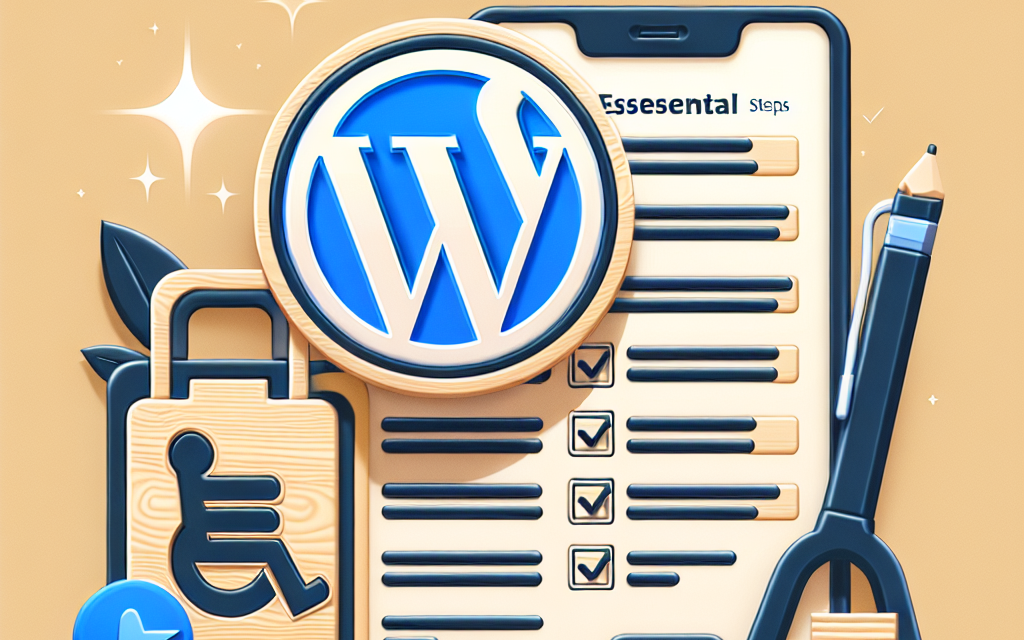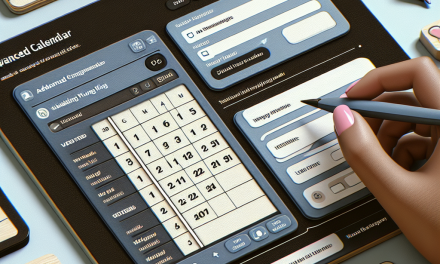In today’s digital landscape, ensuring your website is accessible to everyone is not just a legal obligation but also a moral one. The Americans with Disabilities Act (ADA) mandates that all public spaces, including websites, be accessible to individuals with disabilities. This is particularly relevant for WordPress site owners who aim to create inclusive online experiences.
Below are essential steps to ensure your WordPress site meets ADA compliance standards.
1. Understand the Basics of ADA Compliance
ADA compliance focuses on ensuring that all individuals, including those with disabilities, can access and interact with your website. Familiarize yourself with the Web Content Accessibility Guidelines (WCAG) as these provide a framework for compliance.
2. Use Accessible Themes and Plugins
Start with a WordPress theme that adheres to accessibility standards. The WordPress Theme Repository has various options that are designed with accessibility in mind. Additionally, use plugins that are also ADA compliant. Seek out specific accessibility plugins like:
- WP Accessibility: This plugin helps improve accessibility features such as color contrast and alt text.
- One Click Accessibility: Offers a suite of tools to enhance usability for those with disabilities.
3. Implement Alt Text for Images
Images enhance user experience but can be a barrier for those using screen readers. Always add descriptive alt text to your images. This can easily be done in the WordPress media library when you upload an image.
4. Ensure Keyboard Navigation
Many users rely on keyboard navigation rather than a mouse. Ensure that all interactive elements, such as buttons and forms, are easily navigable using a keyboard alone. WordPress themes generally support this functionality, but it’s crucial to test it.
5. Use ARIA Landmarks
Accessible Rich Internet Applications (ARIA) roles and landmarks help screen readers navigate complex pages. Implement ARIA attributes to define regions of your site, like head, navigation, and footer. You can find more information on ARIA in the WordPress documentation.
6. Pay Attention to Color Contrast
Ensure that the text is easily readable against the background. A common guideline is to have a contrast ratio of at least 4.5:1 for normal text. Use color contrast checkers available online to verify your color schemes.
7. Create Accessible Forms
Forms are often challenging for users with disabilities. Ensure that:
- Form fields have labels that are clearly associated with their respective inputs.
- Provide clear error messages and guidance on corrections.
- Test your forms for keyboard usability.
8. Transcripts and Captions for Multimedia
If your site includes videos or audio content, always provide transcripts and captions. This will not only benefit users with hearing impairments but also improve SEO.
9. Regularly Test for Accessibility
Utilize online accessibility testing tools like:
- WAVE: A web accessibility evaluation tool.
- Axe: A popular accessibility testing tool integrated into developer tools.
Regular testing will help you identify and rectify any potential accessibility issues.
10. Stay Updated with Regular Maintenance
Ensure that your WordPress core, themes, and plugins are regularly updated. Outdated elements can introduce vulnerabilities that compromise accessibility or security.
Conclusion
Ensuring ADA compliance not only protects you from legal exposure but also enhances your site’s usability and reach. By following these essential steps, you can create an inclusive environment for all users.
Call to Action
Ready to take your WordPress site to the next level? Discover how WafaTech NextGen WordPress Hosting can help you optimize performance, security, and accessibility. Learn more about our services by visiting WafaTech NextGen WordPress Hosting.
For additional resources, check out the official WordPress documentation to deepen your understanding of accessibility standards and best practices.





